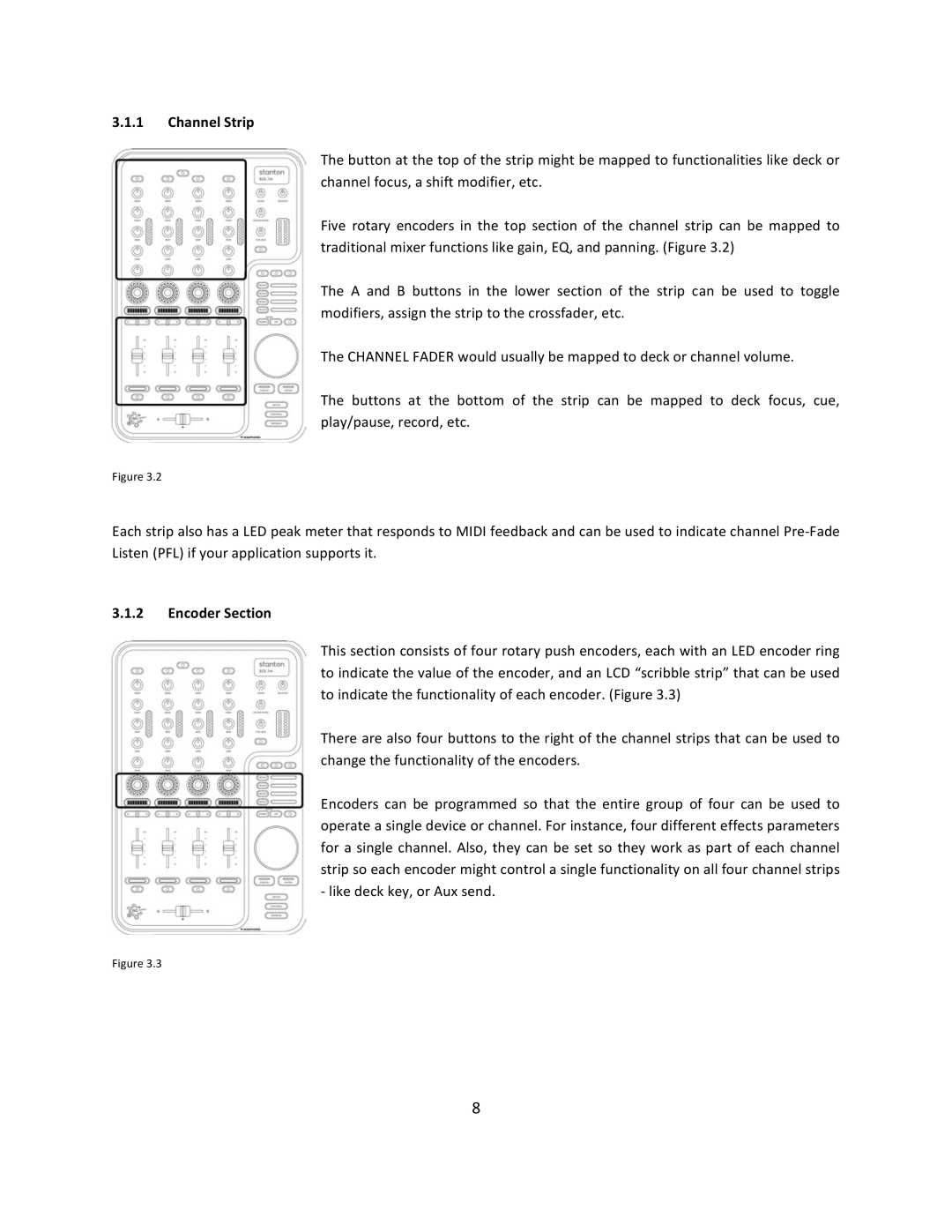
3.1.1Channel Strip
The button at the top of the strip might be mapped to functionalities like deck or channel focus, a shift modifier, etc.
Five rotary encoders in the top section of the channel strip can be mapped to traditional mixer functions like gain, EQ, and panning. (Figure 3.2)
The A and B buttons in the lower section of the strip can be used to toggle modifiers, assign the strip to the crossfader, etc.
The CHANNEL FADER would usually be mapped to deck or channel volume.
The buttons at the bottom of the strip can be mapped to deck focus, cue, play/pause, record, etc.
Figure 3.2
Each strip also has a LED peak meter that responds to MIDI feedback and can be used to indicate channel
3.1.2Encoder Section
This section consists of four rotary push encoders, each with an LED encoder ring to indicate the value of the encoder, and an LCD “scribble strip” that can be used to indicate the functionality of each encoder. (Figure 3.3)
There are also four buttons to the right of the channel strips that can be used to change the functionality of the encoders.
Encoders can be programmed so that the entire group of four can be used to operate a single device or channel. For instance, four different effects parameters for a single channel. Also, they can be set so they work as part of each channel strip so each encoder might control a single functionality on all four channel strips - like deck key, or Aux send.
Figure 3.3
8
